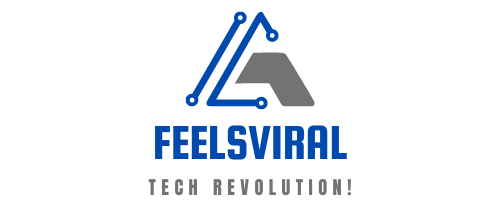Starting a tech startup is akin to taking up a thrilling journey. You have the dream and the tenacity to leave a footprint in the tremendous development of technology. However, there is one element that can prove to be a decisive factor in the course of your journey: product development. The stages of developing the product features, from an innovative idea to the defined and marketable product concept, include strategizing and orderly measures.
In today’s world where it is almost compulsory to reach the end goal at an accelerated pace, it is not enough to simply create something nice, it has to serve a purpose, and most importantly, there has to be a plan in place to counter competition. All these further indicate how crucial it is to appreciate product development concepts. Starting with people who are newbies in this field as well as those who wish to improve the current status accolades, chances of getting it right as far as the strategies are concerned are very high for the advancement and the viability of any startup in the era of cutthroat competition.
Grasping the Market
Grasping one’s potential market is key to Tech startups. It’s not enough to say that they have great insight. That insight has to solve some problems. The market analysis enables you to refrain from self-plagiarism by identifying the opportunities, the hot corridors, and the users. Questionnaires, polls, interviews, and focus groups can help gather useful information that potential customers would like to relay.
The analysis of competitors is no less important. What are the strengths and weaknesses of such companies? This helps you position yourself and your product better. This hack is quite simple and can be performed like ordinary analytical activities on the Internet. There are websites such as Google Trends or social media analysis that help you to gather all this data easily.
Apps & Tools
Tech startups usually seek user feedback in the endlessly-developing product research cycle. It captures the kind of information that no amount of market research would expect to derive. For example, some market research can be a little daunting for most people. When one tests a product, it is possible to pinpoint and correct problems before they snowball into catastrophic issues. Thanks to this, whenever the time comes for the company, there will always be improvements made. This cycle promotes creativity and leads to a higher level of user contentment.
Making it possible for users to give feedback via methods such as willingness to pay surveys and beta test groups ensures proper addressing of audiences. It is a pleasure for users to voice their opinions, and this locks them in. This is so because there is a constant interaction with the user’s requirements, and it often brings better functionality and design. Well, a correct understanding of the target audience is one of the most crucial processes in creating product design and marketing strategy in the world of startup companies that grow more and more rapidly embracing new technology. But it is also some turns in product users — pain management cycles.
Agile Methodology
Agile methodology has proved to be a winning strategy for new technology firms. It focuses on flexible and gradual development thus allowing quick response to change. This is particularly important in the fast-moving world of technology. Since projects can be divided into smaller units of work, these features can be released bit by bit at an incremental pace. Each new edition comes with additional information that directs the next step or development. Users are given the chance to provide input in person almost instantly which leads to improvement in the quality of the product.
In addition, Agile also inspires diversity in work. For instance, new companies can validate their theories for a low commitment cost. If something is not working out, it becomes easy to change a few details without incurring too much loss hence increasing room for new ideas. This means that going Agile means that there will always be scope for measurements unless movement stagnates even where a product is being manufactured.
Continuous Innovation and Adaptability
It is worth noting that continuous innovation is the lifeblood of any technology start-up. The market changes very fast and what is working today might not work tomorrow. Product change is a good move and a way in which one should think outside the box. There is a direct relation between the ability to adapt and the ability to innovate. So for start-ups, they need to be able to switch gears if the situation is no longer working or the market changes in ways that are not anticipated. This leanness permits the teams to indulge in trials, running out of such trials rather quickly and bouncing back rather rapidly.
Pouring resources into research and development can also throw light on any emerging trends. Getting ahead of the curve opens up unique offerings that create differentiation from the competitors. Those organizations that will turn to constant improvement are likely to sail through the challenges better than those that will be stuck in their rut. This is helped by the fact that being flexible enables the growing young companies to act when opportunity calls without wasting any time.
Product Development
Applying technology is vital in the current day and age of product development. Staring at the prospects of running a startup business with the relevant tools and devices would help in shortening steps and boosting creativity. Data analysis is an important aspect of learning user actions. Teams’ examples can analyze the data and patterns and therefore modify the features and designs of the products.
Automating tools enhances efficacy in enhancing the management of a project. It also helps in keeping the whole team on the same track as they work on the project. AI may also help the initiative with information regarding what the market might look like in the future. This helps startups to outpace the competition by focusing on an important aspect: understanding the customer even before their needs are presented.
Conclusion
A growth mindset is an essential weapon for tech startups especially during the process of product development. This strategy helps to remain resilient and miraculous whenever there are challenges. It promotes a culture where teams consider failing not as a hindrance but as an opportunity to grow. Within an organization focusing on growth, there is no inhibition to creativity. They become more open to risk and taking on new concepts without the restraint of being afraid to fail. Every cycle is taken as a step closer to perfection.
Also, a growth mindset improves team collaboration. With this belief that ability can improve, everyone thinks outside the box. More ideas bring about better solutions. Given the rapid pace of changes in technology, an open and flexible attitude helps in doing business. Creating change based on some feedback or trends is very powerful.
FAQs
1. What are the common product development mistakes tech startups make?
Some of the most common mistakes include poor market research, poor user interface and experience, lack of focus on the competition, and changing the course of action only when it is too late.
2. How useful is customer feedback in the course of the development process?
Customer feedback is very useful as it informs what customers want and what they do not like. It enables one to take meaningful actions that improve the attractiveness of any product or service being offered.
3. How is product development in the contemporary world influenced by technology?
Technology eases some burdens like gathering and analyzing information for decision-making in the different stages of a product’s life by facilitating processes such as prototyping and testing.
4. Can every kind of project apply Agile methodology?
In as much as Agile is widely applicable for most software or iterative product development-oriented projects, not every project or organizational structure would make use of it; a creative shift is important.
5. How often should we expect to make new products after launching them?
Periodic alterations more so about customers and emerging technologies ensure that their products do not become obsolete. One can also set what can be termed as a lower limit of every three months for a review and revise this depending on industry trends.




